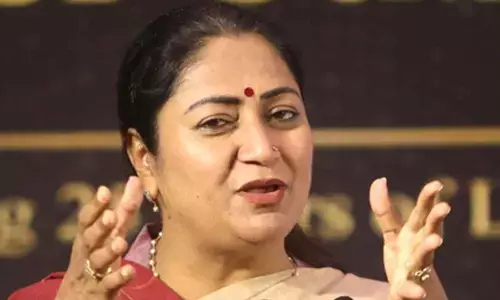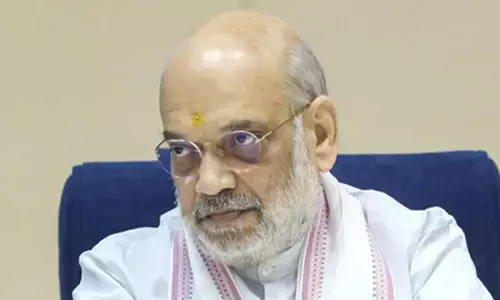The Future of Cloud Computing: A Conversation with Data Engineering Visionary Avinash Khanderi

Cloud computing has redefined the way businesses operate, allowing organizations to scale, innovate, and thrive in an increasingly digital-first world.
Cloud computing has redefined the way businesses operate, allowing organizations to scale, innovate, and thrive in an increasingly digital-first world. But as this transformative technology matures, what lies ahead? To explore the future of cloud computing, I had the privilege of speaking with Avinash Khanderi, a seasoned Senior Data Engineer whose expertise in platforms like Azure, AWS, and Databricks has driven groundbreaking advancements in the field.
With over six years of experience across global companies such as Walmart, Visa, Amazon and IBM, Khanderi has built a reputation as a thought leader in cloud computing and data engineering. During our conversation, he shed light on emerging trends, pressing challenges, and the exciting opportunities that the cloud presents.
The Present: Cloud as a Strategic Necessity
Cloud computing is no longer a luxury for businesses—it’s a strategic cornerstone. “Cloud adoption has moved beyond early adopters to become an essential component of modern business,” Khanderi explains. “Organizations recognize that the cloud enables agility, scalability, and innovation at a pace traditional systems can’t match.”
During his tenure with client visa, Khanderi led the migration of a sprawling on-premises data warehouse to a modern cloud-based Data Lake. This transition not only reduced storage costs by 35% but also enhanced query performance, enabling data scientists and analysts to work more efficiently. At Walmart, he leveraged Google Cloud Platform (GCP) to build pipelines that optimized data workflows, reducing batch processing times by 40% and operational costs by 30%.
“Cloud computing democratizes access to cutting-edge tools,” he adds. “It levels the playing field, empowering startups and enterprises alike to innovate.”
The Future: Emerging Trends in Cloud Computing
When asked about the future of cloud computing, Khanderi outlined five transformative trends that he believes will shape the industry:
Hybrid and Multi-Cloud Architectures
Businesses increasingly adopt hybrid and multi-cloud strategies to combine the strengths of multiple platforms. “Hybrid models offer flexibility, enabling organizations to balance workloads between private and public clouds,” Khanderi explains. “This approach also mitigates the risks of vendor lock-in.”
AI and Machine Learning Integration
Cloud providers are embedding artificial intelligence and machine learning tools directly into their platforms. Khanderi has already seen the power of these integrations in action. At Visa, he used various technologies to develop predictive models for fraud detection, increasing accuracy by 40%. “AI in the cloud is a game-changer,” he says. “It brings real-time insights and automation to the forefront.”
Serverless Computing
The rise of serverless technology promises to simplify cloud development by abstracting infrastructure management. “Serverless computing allows developers to focus on building innovative applications without worrying about underlying hardware,” Khanderi explains.
Edge Computing
With low-latency applications like autonomous vehicles and IoT gaining prominence, edge computing is becoming critical. “Edge computing complements the cloud by processing data closer to where it’s generated, reducing latency and enabling real-time decision-making,” Khanderi says.
Enhanced Data Security and Governance
As cloud adoption grows, so does the importance of data security and compliance. “Cloud providers are introducing advanced encryption and governance tools, but organizations must prioritize a security-first mindset to safeguard their data,” Khanderi emphasizes.
Challenges in the Cloud Landscape
Despite its advantages, cloud computing comes with its share of challenges. Khanderi highlights the complexity of managing multi-cloud environments and ensuring robust data security as two significant hurdles.
“Managing workloads across different cloud platforms requires careful orchestration and expertise,” he says. “At the same time, cyber threats are evolving, making it essential to continuously strengthen security measures.”
However, Khanderi views these challenges as opportunities for innovation. “The future of cloud computing will be defined by how well we address these issues,” he asserts.
The Human Element: Empowering Future Innovators
Beyond his technical expertise, Khanderi is deeply passionate about mentoring the next generation of data engineers. He has played a pivotal role in fostering a culture of innovation and collaboration within his teams, empowering junior engineers to excel.
“Technology evolves, but the human element remains crucial,” he reflects. “By investing in people, we can unlock the full potential of cloud computing.”
Avinash Khanderi’s Vision: A Cloud-First World
As our conversation turns toward the broader implications of cloud computing, Khanderi shares his vision for a cloud-first world. He believes the cloud will be the foundation for every major technological advancement in the coming decades, from artificial intelligence and IoT to blockchain and quantum computing.
“Cloud computing is not just a tool; it’s the backbone of innovation,” he says. “It’s enabling us to solve problems we couldn’t even imagine a decade ago.”
For Khanderi, the future of cloud computing is about more than technology—it’s about impact. Whether it’s driving sustainability through efficient resource management or improving healthcare accessibility with real-time data insights, he sees the cloud as a force for good.
A Leader in Cloud Innovation
Avinash Khanderi’s work stands as a testament to the transformative power of cloud computing. His ability to combine technical expertise with a visionary outlook has positioned him as a leader in the field, inspiring organizations and individuals alike.
As businesses navigate the complexities of the digital age, Khanderi’s insights offer a roadmap for harnessing the full potential of the cloud. And with innovators like him at the helm, the future of cloud computing looks brighter than ever.














